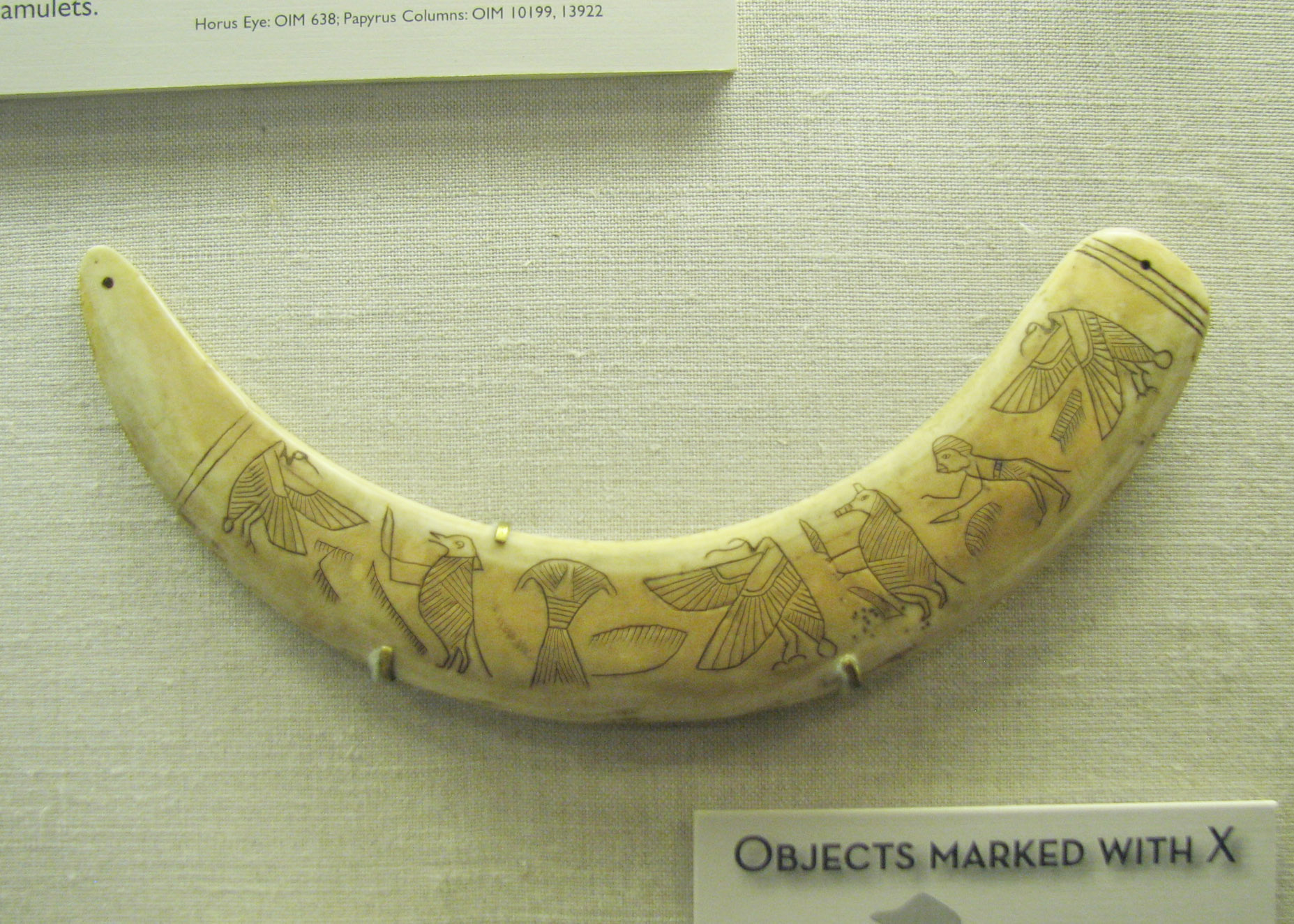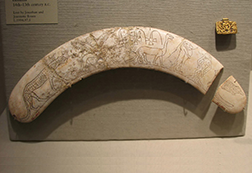
L: 23.1; H: 3.6; Th: 1.0cm
Purchased in Luxor, 1920, OIM 10788
Photo ©Joan Ann Lansberry, 2010
(Info source: _Life of Meresamun_)
 L: 23.1; H: 3.6; Th: 1.0cm Purchased in Luxor, 1920, OIM 10788 Photo ©Joan Ann Lansberry, 2010 (Info source: _Life of Meresamun_) |
|
From _The Life of Meresamun_, edited by Emily Teeter and Emily H. Johnson): "In the Middle Kingdom and Second Intermediate Period, apotropaic knives were used in rituals of magical protection for women and children of all social classes. These knives, also referred to as 'wands,' were usually carved of hippopotamus ivory, invoking the protective powers of the hippotamus goddess Taweret, who was closely associated with childbirth. Examples also exist in wood, faience, and calcite. "The decoration of each knife is unique, but it generally includes deities associated with childbirth. The Oriental Institute example features the goddesses Nekhbet and Taweret and the god Aha wielding, and a protective amulet (the hieroglyphic sign [sa]). Indeed, Nekhbet, a vulture goddess, is evocative of the heiroglyph for the word 'mother [mut]. In addition, Aha (the 'fighter'), like Taweret, was a deity associate with childbirth. He became the leonine dwarf god Bes in later periods." |

 Two Magical Wands @ Met Museum |


